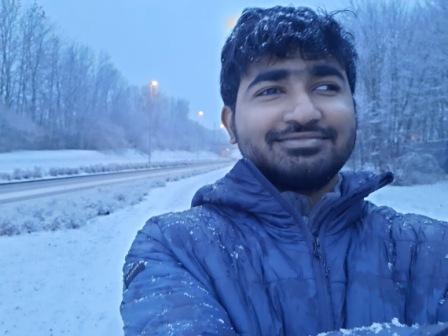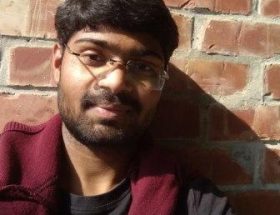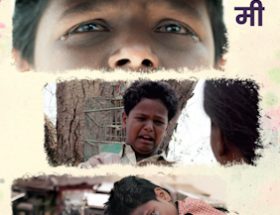Maxwin Rayen
The recent Sengol controversy has captured significant attention and triggered extensive discussions, particularly regarding the authenticity of the sceptre. However, there is more to this story than what initially meets the eye.
The Dravidian movement in Tamil Nadu gained popularity not only for advocating rationalist ideas and self-respect philosophy but also due to its connection with the Pure Tamil movement led by Vellalars. The Vellalars, historically known as landowners, cultivators, and significant contributors to the military and bureaucracy, enjoyed high social status during the Chola period and were considered equals to Brahmins. Despite their disagreement with the atheistic principles of Periyar’s ideology, the Vellalars formed a convenient alliance with the self-respect movement to oppose the imposition of Hindi and the dominance of Vedic Brahminism. The Saiva Vellalars, classified as Shudras, differ from other Shudra communities, which led them to challenge Brahmin authority in religious, political, and social spheres.
A recent book in the “Rethinking India” series sheds light on the historical deprivation of spiritual autonomy experienced by the Shudra community over centuries. While Christians have their religious texts and Muslims have the Quran to explore the spiritual and transcendental aspects of their faith, Shudras lack similar texts that can inspire them on a transcendent quest. If Shudras wish to embark on such a journey, they must rely on Brahmins and their texts, participating in rituals and sermons under their spiritual guidance. However, the Dravidian movement, spearheaded by Periyar, rejected Brahmin spiritual leadership and instead focused on material upliftment through scientific and rationalist philosophies. The Saiva Vellalar-led Shaiva Siddhantam also offered tacit support to the Dravidian movement while maintaining their distinct religious position.
It is worth noting that among Hindus, the Saiva Vellalars have had control over the spiritual texts they have produced over the centuries. From the emergence of the Bhakti tradition to the present day, a segment of the Shudra community has delved into metaphysics, theology, ethics, and the establishment of institutions. They have gained such influence that they can declare a separation from Brahminic philosophy, placing Tamil and Saivam (Shaivism) at the core of their religious universe.
The roots of non-Brahmin Tamil nationalism can also be traced back to the anti-Aryan and anti-Sankritic modern Saivite movement that emerged in the 19th century. This movement provided resistance for non-Brahmin Tamils against the growing neo-Vedantic and Vaishnavaite religious revival, which gained prominence with the rise of the Indian National Congress. Hence, the resistance was not confined to the secular-modern sphere but extended to the religious-spiritual-transcendental realm.
In most parts of India, the Shudras were denied philosophical and spiritual space within the Hindu spiritual system. Within the varna framework, Shudras were deprived of education and spiritual priesthood, preventing them from being creators of spiritual ideas. Instead, they were relegated to serving under the spiritual authority of the Brahmins, the economic power of the Vaishyas, and the security provided by the Kshatriyas. The Brahmins were able to establish spiritual supremacy due to their control over the language used in priestly engagements with the gods.
However, the Shaiva Siddhandhists from Tamil Nadu and Sri Lanka were able to assert spiritual equality with the Brahmins. This was made possible by their control over state power during the Chola period and the democratization of spiritual access through the Bhakti movement. This movement bypassed elite access to spirituality and emphasized intense devotion. The seers who composed devotional hymns did so in Tamil, rather than Sanskrit. The Bhakti movement later spread from Tamil Nadu to other parts of India, transforming the spiritual landscape.
The Vellalars, with their established position in the Tamil spiritual realm, collaborated with the Dravidian movement to challenge the Brahminical and spiritual hegemony of Brahminical authority. Political power in any society is influenced by the prevailing philosophy. Merely achieving dominance through electoral victories is not sufficient for the Rashtriya Swayamsevak Sangh (RSS). They aspire to attain complete hegemony in the religious and spiritual domain. With this aim in mind, the RSS has decided to appropriate one of the pioneering challengers to the construction of India-Hindu identity, specifically those who have led the counter construction of the Tamil-Saivite identity, shaping the religious and cultural consciousness of Tamils.
It is this aspect of the Dravidian movement that is currently facing challenges through co-optation. Presently, organizations like the Rashtriya Swayamsevak Sangh (RSS) have demonstrated a tendency to engage with various Lingayat mutts in Karnataka through their karsevaks. It is reasonable to suspect that their long-term strategy involves shaping the Saiva mutts led by Vellalars into the Hindutva ideology.
~~~
Maxwin Rayen is an LLM graduate in International Human Rights Law from Lund University, specializing in research on genocide, counterinsurgency, and related issues. With a B.A. LLB (hons) degree from NLUO and hailing from Tamil Nadu, Maxwin brings a diverse background and deep passion for promoting justice and human rights.










